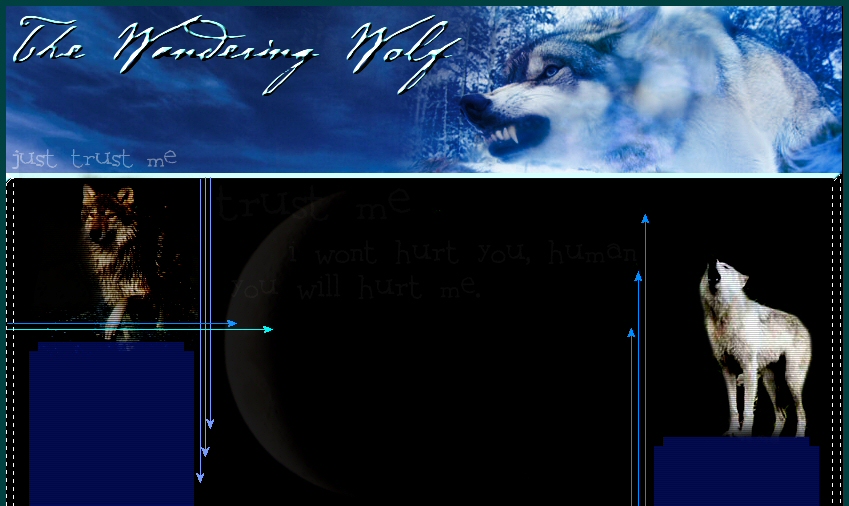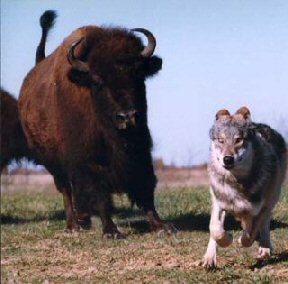

.: The Wolves :.
.: WSC Animals :.
.: The Cub :.
.: The Handwriting
.: My ABCs
.: The Basics
.: Googlism of Jade
.: The Pictures
.: The Pets
.: The Quizzes
.: The Art
.: Sister Sites :.

.: The Site :.
.: For A Wanderer
.: Competition :.
.: Contact :.
.: The Hunt :.

The Beginning: The actual setting out for the hunt begins when one or both of the leaders rise and set out in the direction of the scent of normal prey. At this point the pack will instinctivly follow. Since wolves usually detect animals firstly by scent, they will always stay downwind of their prey. They usually try to catch their prey on the run, since they are excellent runners and their endurance nearly alwayts outlasts that of their prey, but they will attack still-standing prey if a sickly or old one is noticed. This is because a tired animal on the run can inflict much less damage since it is tired, and an animal at bay can cause greater injury. Since wolves attack animals which are on the run, animals like Moose, elk, and caribou, and even deer, which are animals that stand at bay, are less likely to be attacked. However, all packs of animals can be scared into a run, which is what makes the wolves' hunt so ingenious.
Defense: Members of the deer family or similar animals can defend themselves with little effort by use of their powerful, hard hooves. If approached at a standstill, the deer can easily kick with its frontal legs, or its hind legs. If such a blow occurs, and meets contact with the wolf, this wolf will most likely suffer great injury or most-likely, death.
The Attack: Usually, the wolves will crouch in a circle around the potential prey. Then, one or two of the leaders will rise, test the animal, and retreat if it refuses to run or shows signs of agression. After this happens, the rest of the pack will crowd closer to the animal, and ready themselves for a group attack. Once the prey attempts to make a move, the wolves will lunge upon him. Some will attempt to bring him down to the ground, while one will usually go for the "life vein" or scientifically known as the jugular.
The Lupine Diet: Wolves are often described as ravenous creatures who overeat and endanger many of the surrounding life in their territory. Nothing could be further from the truth. Wolves only kill what they eat, and are generally hungry because they do not eat enough. Although they will gorge if they have gone hungry for several days, they do not overeat. Homo sapiens, in my opinion, are probably the only animals who truly overeat.
In North America, their main prey consists of bison, moose, caribou, elk, deer, wild goats, and wild sheep. They can also prey upon smaller prey like beaver, porcupines, hares, rabbits, snakes, and birds, such as grouse, ducks, and geese. Wolves looking for a small meal for only themselves will seek out mice and voles. In fact, a wolves' diet is not even limited to the above listed. They will prey upon anything that they feel apprpriate and that is what makes them so adaptable. It is said by many scientists and wolf researchers that other then humans, they are the most adaptble creatures.
This only dips into the main portion of what wolves and hunting are. To have a full understanding of the beauty and majesty which wolves attain while hunting, you have to witness it yourself. Something I am anticipating greatly at this year's Wolf Camp. Please read on to understand the world of the wolf even further.